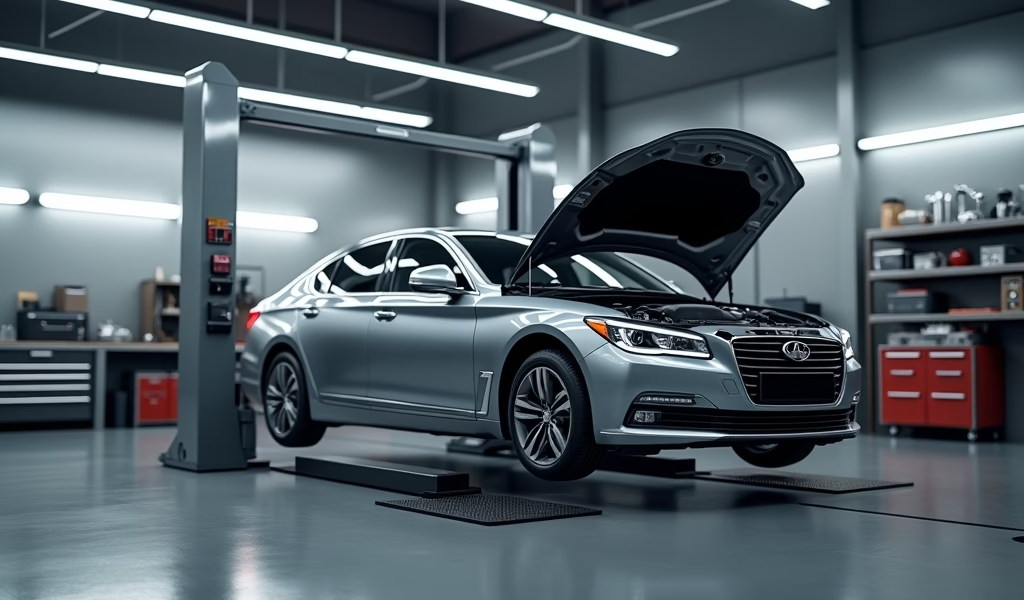Overview
The article provides seven essential maintenance tips for owners with 0% APR car deals, emphasizing how proper care preserves both vehicle performance and financial investment. Regular maintenance including following manufacturer schedules, timely oil changes, tire care, brake maintenance, battery health monitoring, fluid checks, and preventative cleaning can save thousands in repairs while maintaining resale value.
Table of Contents
- Understanding 0 APR Car Deals
- Pro Tip #1: Follow Manufacturer’s Schedule
- Pro Tip #2: Oil Changes Are Non-Negotiable
- Pro Tip #3: Tire Care and Rotation
- Pro Tip #4: Brake System Maintenance
- Pro Tip #5: Battery Health Management
- Pro Tip #6: Fluid Level Monitoring
- Pro Tip #7: Preventative Care and Cleanliness
- Protecting Your Investment for the Long Haul
- Frequently Asked Questions
Understanding 0 APR Car Deals
Scoring a 0 APR car deal feels like winning the automotive lottery—and for good reason. These unicorn financing offers mean every dollar you pay goes straight to your vehicle’s principal amount, with absolutely no interest tacked on. Talk about a breath of fresh air in today’s high-interest climate!
But here’s what most folks don’t realize: that shiny new ride with the sweet zero-interest financing is like a star athlete who needs proper care to perform. Skip the maintenance, and you’re not just risking mechanical issues—you’re potentially flushing thousands of dollars down the drain.
When you drive off in that new car with 0% interest, you’ve made a savvy financial move that deserves protection. Many car buyers looking for deals focus solely on the purchase price, but maintaining your vehicle properly is where the real long-term savings happen.
These 0 APR deals often come with specific warranty requirements that mandate regular service visits. Miss those appointments, and you might find yourself with a voided warranty just when you need it most. Think of your service schedule as the rulebook for keeping that financial advantage you worked so hard to secure.
Remember that depreciation takes the biggest bite out of your car’s value—not gas, not insurance, not even repairs. A well-maintained vehicle can retain thousands more in resale value compared to one with spotty maintenance history. That difference often exceeds what you saved with your 0% financing!

Pro Tip #1: Follow Manufacturer’s Schedule
Your vehicle’s manufacturer didn’t just randomly pick service intervals—they engineered your car from the ground up and know exactly what it needs and when. That little book gathering dust in your glove compartment? It’s actually a goldmine of information tailored specifically to your vehicle.
Most modern vehicles have service milestones at 5,000, 15,000, 30,000, and 60,000 miles. Each checkpoint includes specific inspections and replacements that keep your vehicle running at its peak. Some newer models even have built-in maintenance reminder systems that alert you based on your actual driving habits, not just mileage.
I’ve seen it countless times in my shop: a customer skips the 60,000-mile timing belt replacement because “the car was running fine,” only to return a few thousand miles later with catastrophic engine damage. That $800 maintenance service suddenly became a $4,000 engine repair—not exactly the kind of math that helps your budget.
According to Car and Driver research, vehicles that receive regular maintenance according to factory schedules last an average of 200,000 miles, while neglected vehicles often don’t make it past 120,000 miles. That difference represents years of additional service from your investment.
If you’re thinking, “I’ll just handle it when something breaks,” I’d gently remind you that modern cars are designed as integrated systems. What starts as a minor issue with one component can cascade into multiple problems if left unchecked. Preventative maintenance isn’t just smart—it’s significantly more affordable than reactive repairs.
Pro Tip #2: Oil Changes Are Non-Negotiable
If engines could talk, they’d beg you not to skimp on oil changes. This simple service is the absolute foundation of vehicle longevity. Engine oil doesn’t just lubricate moving parts—it cleans, cools, and protects the heart of your vehicle.
Over time, oil breaks down and becomes contaminated with particles, sludge, and combustion byproducts. When this happens, it transforms from your engine’s best friend to its worst enemy. Dirty oil accelerates wear on precision components and can eventually lead to catastrophic failure.
For most modern vehicles with conventional oil, changes are recommended every 5,000-7,500 miles. If you’re running synthetic (which I highly recommend), you might stretch that to 10,000 miles depending on your driving conditions and manufacturer recommendations.
Let’s talk dollars and cents: an oil change costs $50-$90 depending on your vehicle and oil type. Engine replacement? You’re looking at $3,000-$7,000 minimum. I’ve had to deliver that bad news to car owners, and trust me—watching the color drain from someone’s face when they realize their “savings” on skipped oil changes just cost them thousands isn’t fun for either of us.
Here’s a mechanic’s pro tip: use your regular oil changes as an opportunity for a quick vehicle health check. A good technician will spot developing issues during this simple service, potentially saving you from bigger problems down the road. Consider it your car’s regular physical exam—quick, affordable, and incredibly valuable for long-term health.
Pro Tip #3: Tire Care and Rotation
Your tires are literally where the rubber meets the road—the only parts of your vehicle that actually contact the driving surface. Despite this critical role, tire maintenance is often overlooked until problems arise. That’s a shame, because proper tire care is both simple and incredibly cost-effective.
Start with monthly pressure checks. Underinflated tires waste fuel (about 0.2% per 1 PSI below recommended pressure), wear unevenly, and compromise handling and safety. Overinflated tires reduce traction and ride comfort while wearing prematurely in the center. The correct pressure isn’t what’s stamped on the tire itself—it’s listed on the driver’s door jamb sticker or in your owner’s manual.
Tire rotations are equally important and should be performed every 5,000-7,500 miles. Front and rear tires wear differently due to steering, power delivery, and weight distribution. Rotation ensures all four tires wear at similar rates, maximizing their lifespan and your investment.
Don’t ignore alignment issues. If your vehicle pulls to one side, the steering wheel vibrates, or you notice uneven tire wear patterns (especially on the edges), get an alignment check immediately. The $100 service fee for an alignment is substantially less than the $600+ you’ll spend replacing prematurely worn tires.
Beyond safety and longevity concerns, proper tire maintenance delivers real financial benefits. Consumer Reports studies show that well-maintained tires can last up to 20,000 miles longer than neglected ones. When quality tires can cost $150-$300 each, that additional mileage represents significant savings.
Pro Tip #4: Brake System Maintenance
Your vehicle’s braking system is a marvel of engineering that converts kinetic energy into heat through friction. It’s also the system you’ll be most grateful for in an emergency. Skip brake maintenance, and you’re gambling with both your safety and your wallet.
Warning signs of brake issues include squealing or grinding noises, vibration during braking, a soft or spongy pedal, or pulling to one side when stopping. These symptoms should never be ignored—they’re your car’s way of raising a red flag about potentially serious safety concerns.
Most manufacturers recommend brake inspections every 10,000-15,000 miles. During these checks, technicians measure brake pad thickness, inspect rotors for warping or scoring, test hydraulic components, and evaluate brake fluid quality. This comprehensive approach catches issues before they become dangerous or expensive.
Brake fluid deserves special attention. It’s hygroscopic, meaning it absorbs moisture from the air over time. This moisture contamination lowers the fluid’s boiling point and promotes internal corrosion of brake components. Most manufacturers recommend replacing brake fluid every 2-3 years, regardless of mileage.
Replacing brake pads at the right time is crucial. Wait too long, and you’ll damage rotors or even calipers, multiplying your repair costs. The typical brake pad replacement costs $150-$300 per axle, while adding rotor replacement can push that to $350-$500. Let it progress to caliper damage, and you’re looking at $500-$800 or more.
Remember: brakes don’t typically fail catastrophically without warning. They give you hints through changed performance and sounds. Listen to what your car is telling you, and address brake concerns immediately—your safety and your bank account will thank you.

Pro Tip #5: Battery Health Management
Your car’s battery is the unsung hero of modern vehicles—it powers everything from the initial start to your heated seats and smartphone charging. Yet most drivers only think about it when they turn the key and hear… nothing.
Modern batteries typically last 3-5 years, though this varies dramatically based on climate and driving habits. Extreme temperatures (especially heat) accelerate battery degradation. Short trips prevent batteries from fully recharging, while corrosion around terminals can reduce charging efficiency.
After your battery reaches three years of age, have it tested annually. This simple check can predict failure before you’re stranded in an inconvenient or unsafe location. Most auto parts stores and service centers offer free battery testing—there’s literally no excuse to skip this preventative step.
Battery maintenance is surprisingly simple. Keep the terminals clean and tight, as corrosion can prevent proper electrical flow. In colder climates, consider using a battery tender during long periods of inactivity. And if your vehicle isn’t driven regularly, a 20-minute drive every couple of weeks helps maintain battery charge.
Watch for warning signs of impending battery failure: slow engine cranking, dimming headlights when the engine idles, electrical accessories that work intermittently, or a battery warning light on your dashboard. These symptoms rarely improve on their own and usually indicate your battery is on borrowed time.
When it is time for replacement, don’t skimp on quality. The battery powers sophisticated electronics in modern vehicles, and cheaper batteries often deliver shorter service life and less reliable performance. The new car buying process typically includes a premium battery—maintain that standard when replacing it.
Pro Tip #6: Fluid Level Monitoring
Your vehicle relies on various specialized fluids, each with a specific job in keeping systems running smoothly. Think of these fluids as your car’s lifeblood—each serves a crucial purpose, and running low or using degraded fluids can lead to expensive repairs.
Here are the essential fluids to monitor regularly:
- Engine oil: Check monthly by removing the dipstick, wiping it clean, reinserting it, and checking the level
- Coolant/antifreeze: Verify levels in the transparent reservoir when the engine is cool
- Transmission fluid: For vehicles with dipsticks, check while the engine is running and warm
- Power steering fluid: Check the reservoir level with the engine off
- Brake fluid: Ensure the level is between the min/max marks on the reservoir
- Windshield washer fluid: Top up regularly, especially during winter months
While checking fluid levels is relatively straightforward, interpreting their condition often requires professional expertise. Discolored transmission fluid, for instance, can indicate internal wear that needs immediate attention. Similarly, coolant that appears rusty suggests corrosion within the cooling system.
Most fluids have recommended replacement intervals independent of their levels. Transmission fluid typically needs changing every 30,000-60,000 miles. Coolant usually requires replacement every 30,000-50,000 miles. Power steering fluid often lasts 50,000 miles or more but should be inspected regularly for contamination.
I’ve seen too many vehicles towed into my shop with seized engines or failed transmissions that could have been saved by simple fluid checks. One memorable customer ignored his coolant leak until the engine overheated catastrophically on the highway. What would have been a $150 radiator hose replacement became a $4,500 engine rebuild.
Develop the habit of checking your fluids monthly, or at every other fuel fill-up. This five-minute ritual can save you thousands in repair costs and extend your vehicle’s service life significantly.
Pro Tip #7: Preventative Care and Cleanliness
Your vehicle is more than just a mechanical marvel—it’s also one of your largest investments. Treating it with care goes beyond the mechanical maintenance we’ve discussed. Regular cleaning and preventative care protect both appearance and long-term value.
Exterior washing removes corrosive substances like road salt, tree sap, bird droppings, and industrial fallout that damage paint and eventually lead to rust. These contaminants aren’t just cosmetic concerns—they can eat through clear coat, paint, and eventually metal if left unaddressed.
Aim to wash your vehicle biweekly and apply a quality wax quarterly. This simple routine creates a protective barrier against environmental damage while maintaining your paint’s luster. Modern ceramic coatings offer even longer-lasting protection, though at a higher initial cost.
Interior cleaning preserves surfaces and prevents premature wear. Vacuum regularly to remove abrasive dirt from carpets and upholstery. Clean spills promptly to prevent staining, and use appropriate protectants for dashboard and trim surfaces to prevent UV damage.
Whenever possible, park in covered or garage spaces. This simple step provides significant protection against weather elements, reduces paint degradation from sun exposure, and can even deter theft. If garage parking isn’t available, consider a quality car cover for extended periods of non-use.
Experienced car buyers understand that a well-maintained appearance often reflects overall vehicle care. When selling or trading your vehicle, detailing receipts and visible cleanliness signal to buyers that the mechanical aspects likely received similar attention. This perception alone can add hundreds or even thousands to your vehicle’s resale value.
Protecting Your Investment for the Long Haul
Your 0 APR car deal was a smart financial move—one worth protecting through consistent care. The seven maintenance tips we’ve explored create a roadmap for preserving your vehicle’s performance, reliability, and value over the long haul.
When you consider the financial impact, regular maintenance becomes even more compelling. Spending a few hundred dollars annually on preventative care can save thousands in emergency repairs and preserve thousands more in resale value. It’s not just about avoiding breakdowns—it’s about maximizing your return on investment.
Create a simple maintenance tracking system, whether it’s a smartphone app, a calendar with reminders, or a logbook in your glove compartment. Document each service with date, mileage, and work performed. This record becomes invaluable when selling your vehicle and serves as proof if warranty questions arise.
Remember that your 0% APR deal gave you a financial head start—proper maintenance helps you maintain that advantage throughout your ownership experience. A well-maintained vehicle isn’t just more reliable; it’s dramatically more cost-effective over time.
Has your vehicle had its recommended maintenance lately? If not, perhaps it’s time to schedule a check-up. After all, preserving your 0 APR investment today means more reliable transportation and stronger finances tomorrow. Your future self will thank you for the effort!
Frequently Asked Questions
What exactly is a 0 APR car deal?
A 0 APR car deal is a financing arrangement where you pay zero interest on your auto loan. You only pay back the principal amount borrowed, potentially saving thousands compared to standard interest-bearing loans.
Are there hidden catches with 0 APR financing?
Most 0 APR deals require excellent credit scores and sometimes shorter loan terms. Many dealers also won’t negotiate much on the vehicle price when offering zero-interest financing.
How often should I service my car with 0 APR financing?
Follow the manufacturer’s recommended service schedule outlined in your owner’s manual regardless of financing type. Missing scheduled maintenance could potentially void portions of your warranty.
Does skipping maintenance void my car warranty?
Yes, neglecting required maintenance can void specific warranty coverage related to the neglected systems. Manufacturers can deny claims if they determine lack of maintenance contributed to the failure.
Is it better to get 0 APR or a cash rebate?
This depends on the specific offer, loan amount, and your financial situation. Generally, 0 APR is better for larger loan amounts and longer terms, while rebates may benefit those who plan to pay off the loan quickly or have a substantial down payment.


Pingback: SUV With 0% Financing for 72 Months Tips - knowsyourcar.com
Pingback: 0 car finance deals: 7 Proven Car Care - knowsyourcar.com
Pingback: 0% APR Cars: Ultimate Maintenance Guide - knowsyourcar.com